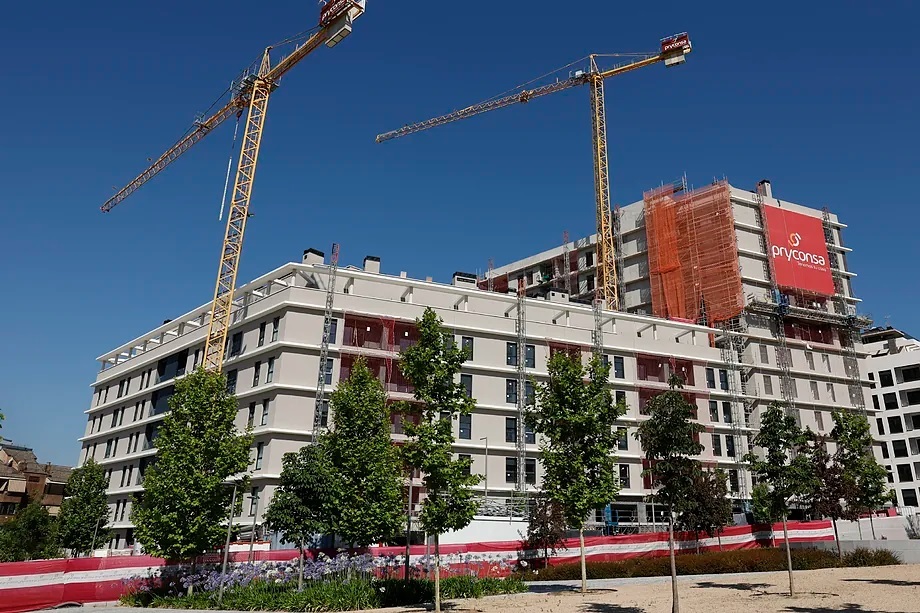Madrid needs to build over 40,000 homes per year to meet the huge demand for housing, a figure far from reality as only 17,000 houses are currently being built annually.
The mismatch between limited supply and immense demand has resulted in an accumulated request for 75,000 homes in the last three years that has not yet been met. This situation, combined with the rise in construction material prices and land scarcity, has caused apartment prices to skyrocket in the region, reaching an average of 3,247 euros (3403 $) per square meter.
All these circumstances were discussed at a conference organized by Madrid Open Cities at the Architects' Association on strategies to attract real estate investment to the capital.
The million-dollar question raised at the conference was: What is causing the construction delays? Carolina Roca, president of the Madrid Real Estate Developers' Association (Asprima), listed five factors causing delays in advancing urban developments: the legal framework regulating land, which she believes is a "real bottleneck"; bureaucracy in processing urban planning permits that can take years; taxation that imposes over 25% on the final price of homes; legal uncertainty leading to legal actions halting projects, even when in the urbanization phase, and finally, a significant shortage of labor.
Roca cited Canada as an example, a country that has managed to build over 10,000 affordable homes in just six months during a severe housing crisis. The Canadian government established the Rapid Housing Initiative to simplify administrative procedures, set up a one-stop shop for local governments to obtain financing.
In Spain, developers are calling for the option to convert rural land into urban land and to flexibilize land use to develop housing on industrial and tertiary lands. A step already taken by the Madrid government by approving the Omnibus Law in 2022, amending the land law to allow for apartment construction on designated lands.
In response to this situation, the Asprima association has developed the Trinity project, a detailed study analyzing the current situation to attract more foreign investment to Madrid and address upcoming urban developments.
According to the report's estimates, 35,000 homes will be launched in Madrid in 2027, requiring an investment of 8 billion euros. Developers secure 70% financing from banks for homes for sale, but the remaining 30% needs to come from foreign investment.
In the coming years, the region will face ambitious urban developments such as those in the southeast -El Cañaveral, Valdecarros, Los Berrocales, Los Ahijones, and Los Cerros- which will involve building 120,000 residences. Surrounding municipalities are also gearing up for major projects: 20,000 apartments will be built in Alcorcón; 17,572 in Brunete; 10,740 in Rivas-Vaciamadrid; 8,600 in Alcobendas, and 5,500 in Pozuelo.
All these residences will help alleviate the housing deficit that forces one million young people aged 24 to 35 to continue living with their parents, despite being employed, according to data from the National Statistics Institute (INE).
The General Director of Housing and Rehabilitation of the Region, María José Piccio, emphasized the urgent need to provide housing for young people at the conference, announcing that the regional government will build 2,000 new rental apartments under the Young Solution Vive Plan aimed at those under 35 years old.
These homes will complement the 8,500 units from the Vive Plan committed to be built by President Isabel Díaz Ayuso during her term. Additionally, the Region has launched the My First Home program to facilitate young people with up to 95% mortgage approval.
In their Trinity report, developers insist that Madrid is the best destination for residential investment in Europe, being one of the European regions with the highest GDP, surpassed only by Ille de France and London. Madrid has surpassed Rome and Berlin in foreign investment and is currently competing with Paris and London, which have older metropolitan areas with less growth potential.
